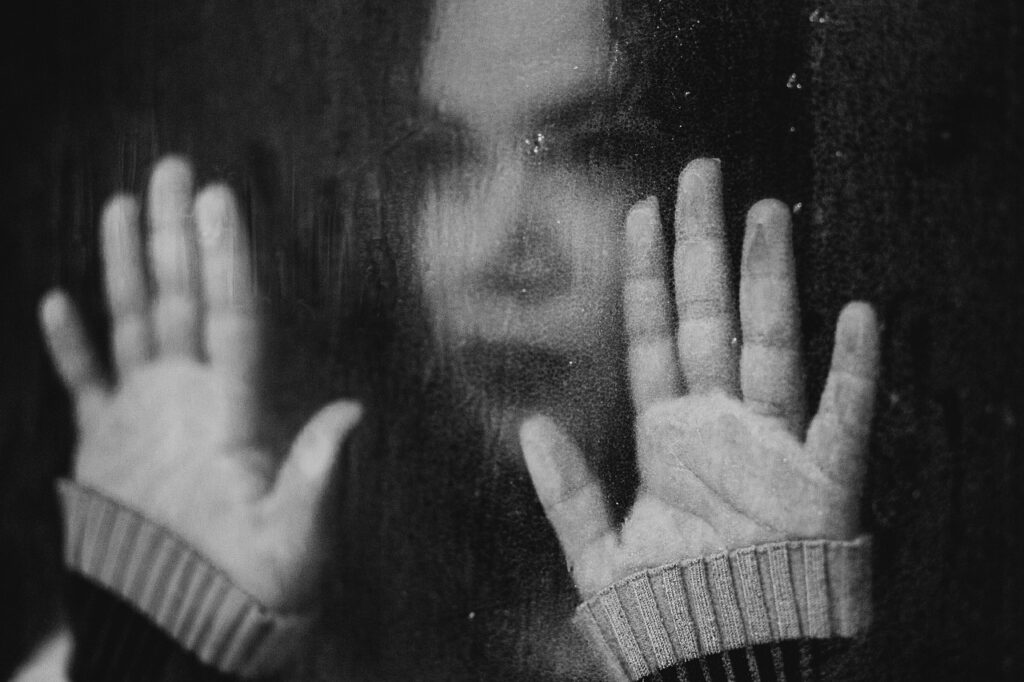- Women's Mental Health Crisis
- Mental Health Stats
- Why Australia?
- Geographic isolation and rural access issues
- High rates of gender-based violence
- Economic inequality and financial stress
- Cultural stigma around mental health
- Limited targeted mental health programs
- Indigenous women face compounded challenges
- Rising rates of body image issues and self-harm among young women and girls
- What To Do If Your Next Appointment Is Months Away
- Self-Help
Women’s Mental Health Crisis
Australia is facing a growing mental health crisis among women — one that often goes unseen but affects millions. While mental health struggles touch all demographics, women are increasingly burdened by unique stressors. Those are caregiving roles, gender-based violence, financial inequality, and the lasting effects of the pandemic.
Recent data shows a sharp rise in anxiety, depression, and psychological distress among Australian women. Many face barriers to support — long wait times, social stigma and limited access in rural areas. These challenges aren’t just personal; they reflect broader systemic issues that urgently need attention.
Mental health deserves more than quiet suffering. It deserves awareness, compassion, and accessible solutions.
Disclosure: Article contains affiliate links.
Mental Health Stats
Recent data by MedicalXpress [1] highlights an ongoing mental health challenge among Australian women in 2025. Experts emphasize the urgent need for the government to expand beyond physical health.
Here are some significant findings:
- About half of Australian women are currently facing mental health difficulties. Nearly one in four experiencing severe conditions, a rate consistent since 2022.
- Women dealing with health issues unique to their sex, such as polycystic ovarian syndrome (PCOS) or endometriosis, report notably higher psychological distress than those without such conditions.
- More than one-third (37%) of women undergoing menopause or perimenopause suffer from depression or anxiety linked to this transition.
- Around 14% of women with mental health challenges also have attention-deficit/hyperactivity disorder (ADHD).
- Alarmingly, girls aged 14 to 19 show a significant rise in body image concerns, increasing from 48% in 2024 to 64% in 2025, alongside a jump in self-harm or suicidal behaviors from 16% to 25% over the same period.
- Among Indigenous women facing mental health issues 24% report post-traumatic stress disorder (PTSD), when it is 18% for non-Indigenous women.
The most common mental health conditions reported by Australian women in 2025 include:
- Depression (52%)
- Anxiety disorders, including generalized anxiety disorder (44%)
- Concerns related to body image (39%)
- Sleep-related disorders like insomnia (30%)
- Health anxiety or illness anxiety disorder (20%)
Major factors contributing to these mental health struggles are:
- Low self-esteem or confidence (50%)
- Financial stress and pressures (45%)
- Feelings of low self-worth (42%)
- Sleep problems (40%)
- Being overly self-critical or perfectionistic (40%)
Barriers preventing many women from seeking help remain high:
- 37% believe they can manage their mental health independently
- 36% find professional help unaffordable or too expensive
- 35% don’t perceive their mental health issues as serious enough to seek support
Why Australia?
Australia is currently grappling with a serious mental health crisis affecting women at alarming rates. Compared to many other countries, the challenges faced here are particularly intense. They highligh the urgent need for deeper understanding and effective support to address the growing emotional and psychological struggles of Australian women.

Geographic isolation and rural access issues
Australia’s immense geographic size and population distribution pose unique challenges for mental health care. Especially for women living outside urban centers. Unlike many countries with more concentrated populations, Australia’s rural and remote regions are vast. They are separated by hundreds of kilometers from the nearest mental health facility or specialist. This isolation significantly limits timely access to mental health services, leaving many women without the support they require.
In these areas, mental health professionals are in short supply, and the few available may be overwhelmed or lack specialized training to address women’s specific needs. The cost and time involved in traveling long distances to receive care create further barriers.
Telehealth has offered some improvements, but inconsistent internet access and technological challenges continue to restrict its effectiveness in rural communities.
Addressing geographic isolation and improving mental health infrastructure in rural Australia is critical to closing this gap and ensuring all women can access the care and support they deserve, regardless of where they live.
High rates of gender-based violence
Australia faces disproportionately high rates of gender-based violence. Compared to many other developed nations, Australian women experience higher levels of domestic violence and sexual assault.
According to the Australian Bureau of Statistics (ABS), one in six Australian women aged 18 and over has experienced physical or sexual violence by a current or former partner since the age of 15. This rate is significantly higher than in many comparable countries, such as the UK or Canada. Furthermore, Indigenous women face even graver risks, experiencing violence at rates up to 3.5 times higher than non-Indigenous women. [2]
Economic inequality and financial stress
Economic inequality and financial stress are major contributors to the mental health challenges faced by Australian women. Women in Australia often earn less than men, experience higher rates of underemployment, and are more likely to work in casual or insecure jobs, leading to greater financial instability. These economic pressures significantly increase stress, anxiety, and depression among women.
According to the Workplace Gender Equality Agency, as of 2025, the gender pay gap in Australia stands at about 21%, meaning women earn significantly less on average than men. Additionally, women are more likely to bear the financial burden of unpaid caregiving work, which limits their career advancement and economic independence. [3]
Cultural stigma around mental health
Despite growing public awareness, cultural stigma around mental health continues to be a major barrier for Australian women. Deep-rooted beliefs about strength, self-reliance, and shame associated with mental illness discourage women from acknowledging their struggles or seeking professional help. This stigma is especially strong in certain communities, where mental health is still a taboo subject or a personal weakness.
Many women report feeling judged, misunderstood, or dismissed when they open up about their mental health. Some fear being labelled as “unstable” or worry it might affect their employment, relationships, or social standing. As a result, mental health issues go unspoken and untreated — building over time until they become more severe.
Limited targeted mental health programs
One of the key reasons Australia’s mental health crisis among women remains so severe is the limited availability of programs specifically designed to meet their unique needs. While general mental health services exist, few are tailored to address the complex, gender-specific factors that affect women — such as hormonal changes, reproductive health, caregiving responsibilities, gender-based trauma, and societal expectations.
Many existing mental health services follow a one-size-fits-all model that overlooks how mental health conditions can manifest differently in women, both emotionally and physiologically. For example, conditions like perinatal depression, menopause-related mood disorders, or trauma from domestic violence require nuanced approaches and specialist care — which are often underfunded or unavailable in public systems.
This lack of targeted support leaves many women without effective treatment pathways, contributing to chronic distress and worsening outcomes. Marginalized groups, including Indigenous women, LGBTQ+ individuals, and those from culturally and linguistically diverse backgrounds, face even greater barriers when programs fail to reflect their lived realities.
Indigenous women face compounded challenges
Indigenous women in Australia experience some of the highest levels of psychological distress in the country, due to a complex interplay of historical trauma, intergenerational disadvantage, and ongoing systemic inequities. The legacy of colonization — including forced removals, cultural disconnection, and institutional racism — continues to affect the mental health of Aboriginal and Torres Strait Islander communities today.
Rising rates of body image issues and self-harm among young women and girls
Australia is witnessing a troubling rise in body image concerns and self-harming behaviors among young women and girls—a trend that reflects growing mental health vulnerabilities in this demographic. Social pressures, unrealistic beauty standards, and the pervasive influence of social media are contributing to a crisis of self-worth and identity among teenage girls.
Recent data highlights the severity of the issue: in 2025, 64% of girls aged 14–19 report experiencing body image issues, a sharp increase from 48% in 2024. Alarmingly, rates of self-harm and suicidal ideation in this age group have jumped from 16% to 25% in just one year. These figures point to a mental health emergency unfolding among Australia’s youngest women, with potentially lifelong consequences if left unaddressed. [5]
What To Do If Your Next Appointment Is Months Away
Waiting weeks or even months for a mental health appointment can be frustrating and stressful, but there are important steps you can take in the meantime. First, reach out to trusted friends or family members and share how you’re feeling—having a support network can help you cope.
Consider accessing online mental health resources, apps, or helplines that offer immediate guidance and coping strategies. Engaging in regular self-care practices like exercise, mindfulness, or journaling can also support your emotional wellbeing.
If your symptoms worsen or become overwhelming, don’t hesitate to seek urgent care through emergency services or crisis helplines. Remember, while waiting for professional help, you’re not alone, and there are many ways to find support and manage your mental health day-to-day.
Self-Help
Meditation Self Care Cards
Review: 52 Mindfulness Affirmation & Self-Calming Cards

This deck of 52 mindfulness and affirmation cards is a wonderful tool for promoting relaxation and reducing stress. Each card offers unique, thoughtful messages designed to help you stay present and calm throughout your day. I especially love the added bonus of 15 extra motivational messages, which provide even more inspiration when you need it most.
Stress Relief and Relaxation
Review: Mindfulness Coloring Book For Adults

This adult coloring book features 50 stunning animal and flower mandalas that are perfect for relieving stress and boosting creativity. The varied designs range from medium to high complexity, offering a satisfying challenge. With dark back pages to prevent bleed-through, it’s ideal for markers or colored pencils. Coloring these mandalas provides a calming, meditative experience—great for finding inner peace and taking a mindful break from everyday stress.
Review: Aromatherapy Fragrant Oil Vaporizer

This aromatherapy diffuser quickly became my favorite way to unwind and create a peaceful sanctuary at home. The gentle mist and soft, calming lights melt away stress and help me breathe easier after a long day.
Sleep Aids
Review: White Noise Machine

Many people find the Easysleep White Noise Machine to be a soothing companion for restless nights. Its 25 calming sounds, from gentle rain to soft ocean waves, create a peaceful atmosphere that helps mask disruptive noises and quiet a racing mind.
Review: Queen Size Soft Cooling Heavy Blanket

The 20lb (9kg) Weighted Blanket offers more than just warmth—it provides a comforting embrace that helps ease the mind and body into a peaceful slumber. Designed to apply deep pressure stimulation, it mimics the sensation of being held, promoting the release of serotonin and melatonin while reducing cortisol levels.
Read More
Read more of our articles about self help!
What is Happening in Australia? Women’s Mental Health Crisis
Women’s Mental Health Crisis Australia is facing a growing mental health crisis among women —…
She’s Not Being Dramatic: The Horrors of Medical Neglect in Women
For generations, women have been dismissed, doubted, and misdiagnosed in medical settings. Complaints of pain…
Best Proven Herbal Mood & Stress Supplements for Women in 2025
The best supplements for women in 2025 are the ones that support both body and…
The Role of Women in Buddhism. The Great Support for Mental Health
When you think of Buddhist monasteries, images of monks in orange robes come to mind….
Cooking Was a Chore I Hated—Now It’s My Self-Care Ritual
“You’ll have to cook for your husband one day.””No man wants a wife who can’t…
Foraging: The Ultimate Natural Cure for Women’s Anxiety
I started foraging during a particularly stressful period in my life, when anxiety felt like…






